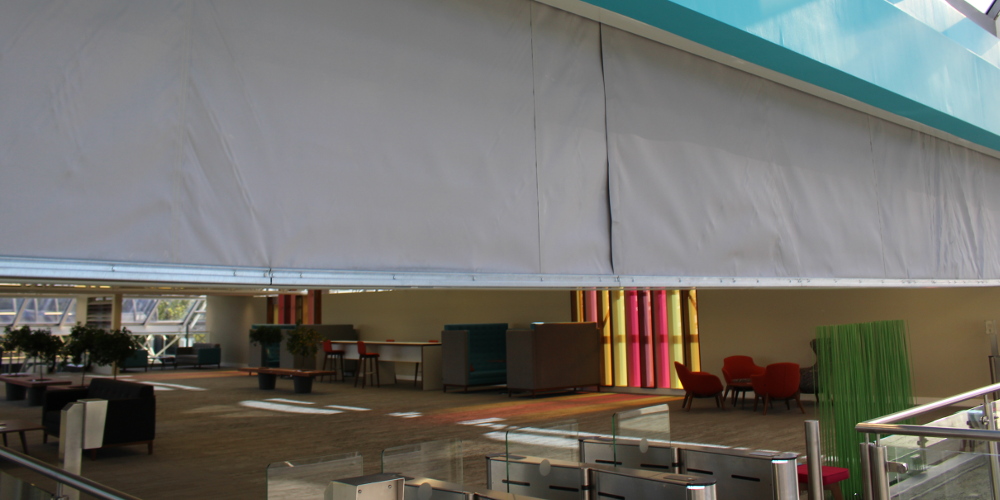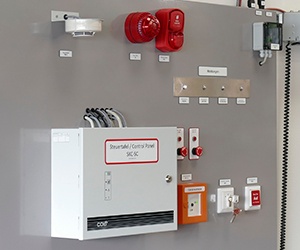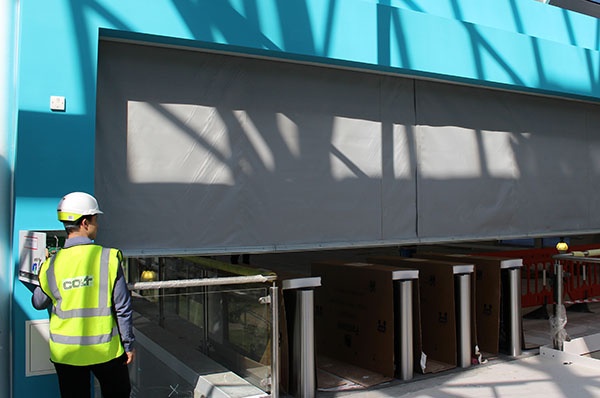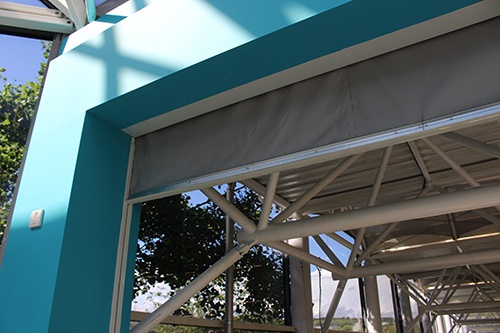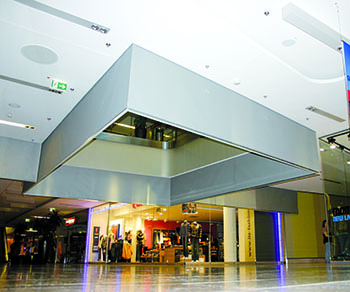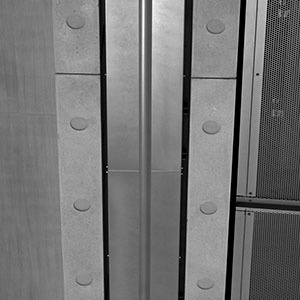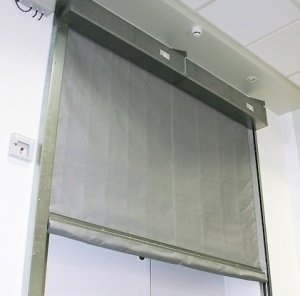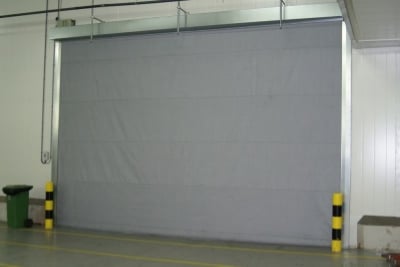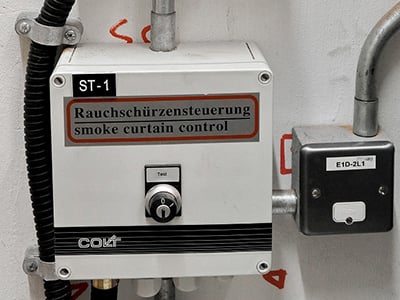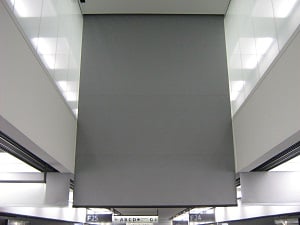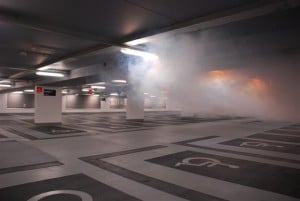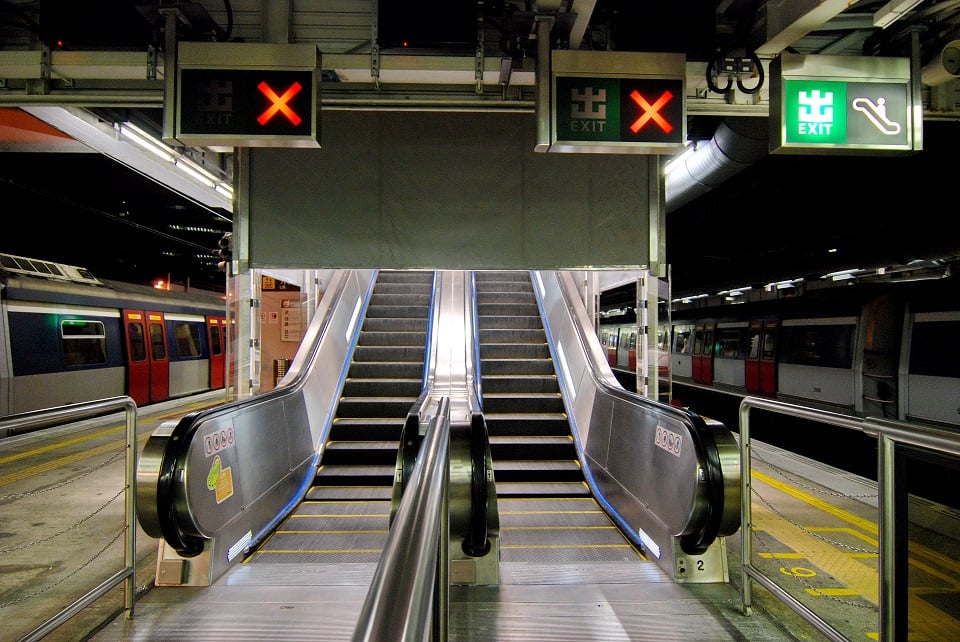Why do these standards exist?
The need for a harmonised set of regulatory standards in relation to fire curtains is a necessity to ensure that all products meet a clearly outlined list of safety requirements. The standards mean that those selling or buying products such as fire curtains, can be absolutely sure that their products are fit for purpose. Many companies do not currently adhere to these new certificates, and will be continuing to sell products that do not in fact meet the new legal requirements.
Read More
Topics:
Smoke Control,
Fire Containment,
Curtains,
Fire Safety
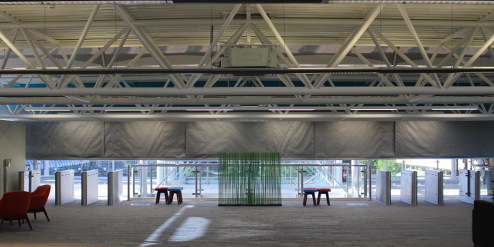
Of late, there have been some high-profile news stories focusing on the fire safety of commercial buildings. During a fire, heat can cause parts of the building to collapse which can lead to secondary fires. This makes it difficult for victims to escape from the building and challenging for the emergency services to fight the fire. This is why buildings are designed with limited compartment sizes, so that there is a barrier, through the use of fire rated walls, floors and ceilings, to prevent fire spread throughout the building (amongst other fire safety provisions) – this is a branch of what is generally known as passive fire protection. Different building types have different limitations. Where the building owner, developer or designer would like to relax these limitations and have a more open plan building design, fire curtains can be used as an active form of passive fire protection – allowing unrestricted vision and movement across the space during normal building use, but dropping to floor level to seal the room off in the event of a fire to contain the heat, flames and smoke to a limited compartment, much the same as a wall or fire door would.
Read More
Topics:
Fire Containment,
Fire Safety
Thanks to all those who attended my webinar last week on the design considerations when integrating smoke and fire curtains into a building. The webinar is now available as a recording, which you can watch at any time.
Read More
Topics:
Fire Containment,
Smoke Containment,
Webinar,
Curtains
Smoke and fire curtains are usually controlled (either individually or in groups) by a zone control panel. The curtains are allowed to fall automatically under the influence of gravity when the power is lost, which can happen in a fire or during a simple power cut. However if there is an electricity outage where there is no emergency, this can be a nuisance, and it can be prevented by using either a local Uninterruptible Power Supply (UPS) or a Battery Back-Up (BBU).
Read More
Topics:
Smoke Control,
Fire Containment,
Controls,
Curtains
Installing fire curtains and smoke curtains can be tricky to get right. Here are 9 hopefully useful tips to help you.
Read More
Topics:
Fire Containment,
Smoke Containment,
Webinar,
Curtains
If you think that five breaths are all it takes to lose consciousness, you won’t be surprised to learn that as many as 70% of victims in a fire suffocate. Thick smoke can lead to disorientation and make it difficult to breathe, while the heat can cause parts of the building to collapse and start secondary fires. All this makes it difficult for people to find their way out of the building and for emergency services to make their way in to fight the fire.
Read More
Topics:
Smoke Control,
Fire Containment,
Smoke Containment,
Curtains
I received some excellent questions during the Q&A section during the recent webinar that I presented. Here you can see my answers to these questions, slightly edited for clarity.
Read More
Topics:
Fire Containment,
Smoke Containment,
Webinar,
Curtains
At the design stage it is necessary to pay attention to the detailing of side guides and bottom bars for smoke and fire curtains.
Read More
Topics:
Smoke Control,
Fire Containment,
Curtains
A properly designed and installed fire curtain will deploy time and time again without any problem. BS 8524-1 includes a reliability test where the curtain is cycle tested to prove reliability of operation over an extended period.
What can go wrong? Excess pressure differences
However, it is quite possible for a fire curtain to stick if subjected to excess pressure differences or air velocities while it is deploying. The problem is that the pressure or velocity pushes the fabric and its end guides against one side of the side guide rail and the resulting additional friction can overcome the gravitational force and stop the curtain in its tracks.
Read More
Topics:
Fire Containment,
Curtains
At our recent webinar on smoke and fire curtains, I received a large number of excellent questions during the Q&A section. Here you can see my answers to these questions, slightly edited for clarity.
There is also a recording of the webinar available. Watching the recorded version will still enable you to claim CPD points.
Read More
Topics:
Fire Containment,
Smoke Containment,
Webinar,
Curtains
Following on from our previous blog covering specifying fire curtains, we now turn to automatic controls for smoke and fire curtains.
Again we’ve been seeing lots of long-winded specifications calling for quite sophisticated control functions and features, mentioning potentially confusing features such as ‘epicyclic gearbox retarders’ which seem to be very specific to certain manufacturers rather than being an application or project requirement. These kinds of specifications may well be over complicating matters and potentially could build in reliability issues as well as increasing capital and maintenance costs unnecessarily.
Read More
Topics:
Fire Containment,
Smoke Containment,
Controls,
Curtains
Fire curtains: what they do. As an alternative to bulky fire shutters or doors, a fire curtain is designed to seal off an opening between two areas, deploying when there is a fire to prevent that fire from spreading from one area to another. It operates automatically when connected to a suitable control system and when it has been installed and commissioned correctly.
Specifying: why level of integrity should come first. With the above in mind, arguably the most important aspect of specifying a fire curtain is deciding what level of integrity is actually required to maintain compartmentation between the two areas to be protected. So, the critical consideration should be, does the fire curtain need to provide 30, 60, 120 or 180 minutes integrity?
Read More
Topics:
Fire Containment,
Smoke Containment,
Curtains
Join me on Friday 27th Febuary 2015 at 12:30 GMT, as I present a free CPD webinar on the design considerations when integrating smoke and fire curtains into a building.
Fire curtains seal off an area which is on fire, thereby preventing fire from moving from one area to another. Smoke curtains prevent the passage of smoke.
Read More
Topics:
Fire Containment,
Smoke Containment,
Curtains
At our recent webinar with guest speaker, John Klote, we had a large attendance with many questions asked. Here you can find John's and my answers to these questions, slightly edited for clarity.
If you missed the live webinar, then a recorded version is available here.
Read More
Topics:
Smoke Control,
Fire Containment,
Webinar
At Colt’s CPD accredited
smoke and fire curtains webinar, we received some interesting questions in the Q&A session at the end, which I would like to share.
Topics:
Fire Containment,
Smoke Containment,
Webinar,
Smoke ventilation,
CPD,
Curtains

